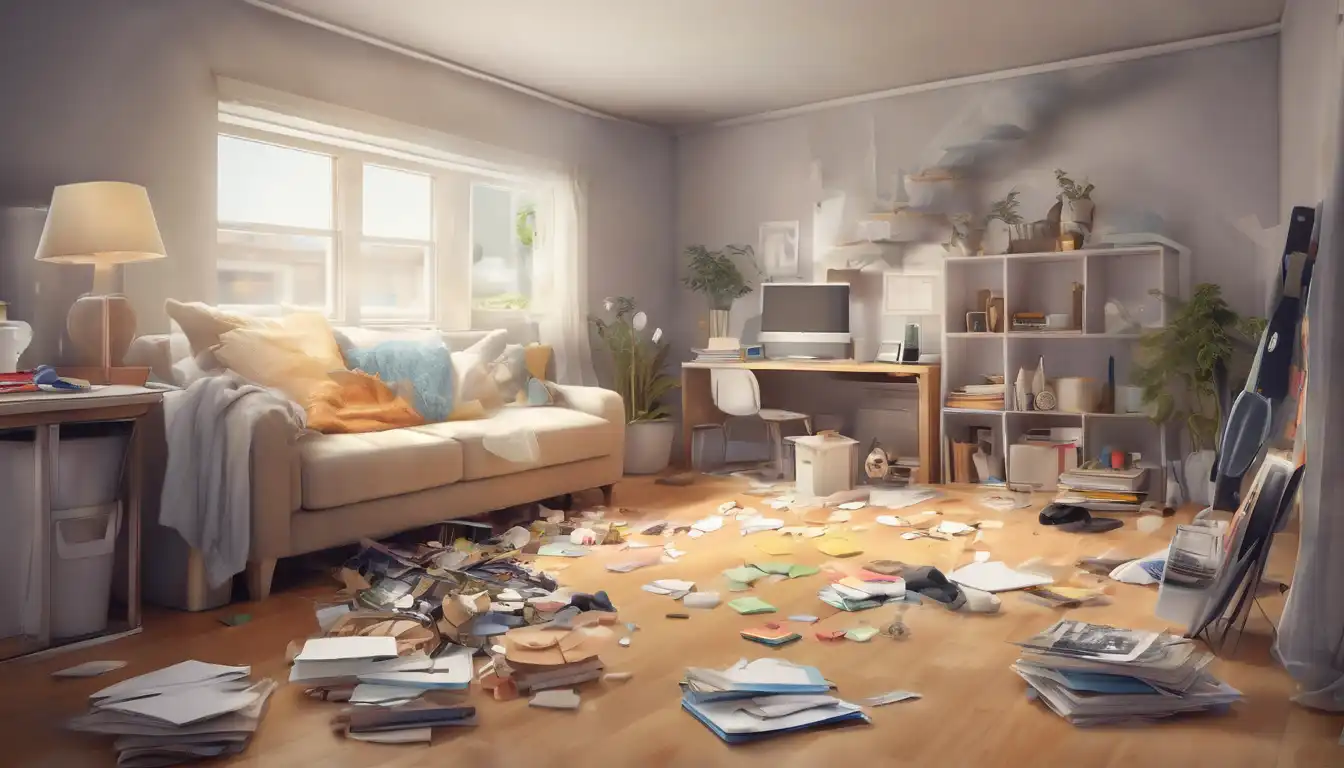Transform Your Space: The Ultimate Home Decluttering Guide
Feeling overwhelmed by clutter? You're not alone. Millions of households struggle with excess possessions that create stress and reduce living efficiency. The good news is that decluttering doesn't have to be a monumental task. With the right approach, you can transform your home from chaotic to calm in surprisingly little time. This comprehensive guide provides practical, actionable steps that deliver real results.
Why Decluttering Matters More Than You Think
Before diving into the practical steps, it's important to understand why decluttering deserves your attention. Clutter isn't just about physical space—it affects your mental clarity, productivity, and even your relationships. Studies show that organized environments reduce stress levels and improve focus. When your home feels orderly, you'll experience greater peace of mind and more energy for the things that truly matter.
Step 1: Set Clear, Achievable Goals
Begin with intention rather than impulse. Ask yourself what you want to accomplish. Are you preparing for a move? Creating a more functional workspace? Or simply wanting to breathe easier in your own home? Define specific, measurable goals like "clear out the kitchen countertops" or "organize the bedroom closet." This focus prevents overwhelm and provides motivation as you see progress.
Step 2: Gather Your Decluttering Toolkit
Proper preparation prevents poor performance. Assemble these essential tools before starting:
- Three boxes or bags labeled "Keep," "Donate/Sell," and "Trash/Recycle"
- Cleaning supplies for surfaces you'll uncover
- A timer to maintain momentum
- Storage solutions like bins or baskets
- Labels and a marker for organization
Step 3: The Room-by-Room Attack Plan
Tackle one room at a time to maintain focus. Start with the easiest space first—often a bathroom or small closet—to build confidence. Here's how to approach each area systematically:
Kitchen Decluttering Strategy
The kitchen is the heart of the home but often becomes a clutter magnet. Empty one cabinet or drawer at a time. Ask critical questions: When did I last use this? Does it have a specific purpose? Does it bring me joy? Be ruthless with duplicates—how many spatulas does one kitchen need? Consider implementing our kitchen organization system for lasting results.
Living Room Simplification
Living rooms accumulate miscellaneous items from daily life. Start with surfaces—tables, shelves, and entertainment centers. Sort through magazines, remote controls, and decorative items. Create designated homes for frequently used items. For entertainment centers, check out our media center organization guide to eliminate cord chaos.
Bedroom Sanctuary Creation
Your bedroom should be a restful retreat. Begin with the closet—a major source of clothing clutter. Use the popular "reverse hanger" method: turn all hangers backward, and after wearing an item, return it with the hanger facing normally. After six months, donate anything still backward. For small items, implement our drawer organizing techniques.
Step 4: The Four-Box Method for Decision Making
When handling individual items, use this proven decision framework:
- Keep: Essential, frequently used, or meaningful items
- Relocate: Items that belong in another room
- Donate/Sell: Quality items you no longer need
- Discard: Broken, expired, or unusable items
The key is making quick decisions—if you hesitate for more than 10 seconds, it probably shouldn't stay.
Step 5: Implement the 15-Minute Daily Habit
Decluttering becomes sustainable when incorporated into your routine. Set a timer for 15 minutes each day to tackle a small area. This could be a junk drawer, a shelf, or a section of countertop. The consistency creates momentum without feeling overwhelming. Many people find that this daily practice prevents clutter from accumulating again.
Step 6: Smart Storage Solutions
Once you've pared down your possessions, organize what remains effectively. Use vertical space with shelves, implement drawer dividers for small items, and choose clear containers so contents remain visible. Remember: the goal isn't to find better ways to store clutter but to reduce what needs storing.
Step 7: Maintain Your Decluttered Space
The real challenge begins after the initial decluttering. Implement these maintenance strategies:
- Practice the "one in, one out" rule—when something new enters, something old leaves
- Schedule seasonal reviews to reassess possessions
- Create homes for frequently used items near where they're used
- Address mail and paperwork daily to prevent pile-up
Common Decluttering Mistakes to Avoid
Even with good intentions, people often make these errors:
- Starting too big: Tackling the entire garage first leads to burnout
- Keeping items "just in case": If you haven't used it in a year, you probably won't
- Buying organization products prematurely: Wait until you know what you're keeping
- Perfectionism: Progress, not perfection, should be the goal
When to Seek Professional Help
If you're dealing with extreme clutter, emotional attachments, or time constraints, consider professional organizers. They provide objective perspectives and specialized systems. For difficult sentimental items, our guide to handling sentimental items offers compassionate strategies.
The Life-Changing Benefits of Decluttering
Beyond the obvious visual improvements, decluttering delivers profound benefits:
- Time savings: Less time searching for lost items
- Financial benefits: Awareness of what you own reduces impulse buying
- Reduced stress: Visual calm promotes mental calm
- Improved relationships: Less conflict over household chaos
- Increased productivity: Clear space supports clear thinking
Getting Family Members on Board
Decluttering becomes challenging when household members resist. Lead by example rather than demanding participation. Create systems that make organization easy for everyone. Designate personal spaces where individuals can keep their items as they prefer, while maintaining shared areas according to agreed-upon standards.
Your Decluttering Journey Starts Now
The most important step is the first one. Choose one small area—a single drawer, a countertop, or a shelf—and apply these principles today. Remember that decluttering is a process, not a one-time event. Each item you remove creates space not just in your home, but in your mind. The peace and efficiency you'll gain make every effort worthwhile. For ongoing support, explore our complete home organization resources to maintain your newly decluttered lifestyle.
